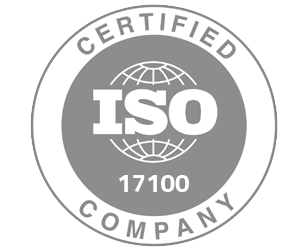
How to Translate Your E-Commerce Website Effectively
If your online store isn’t available in the language your customer speaks, chances are, they’ll shop elsewhere. Translating your e-commerce website is a proven way to reduce cart abandonment, increase time on site, and drive higher conversions. But it’s not just about text—it’s about tailoring the entire user journey. Here’s how to get it right.
Why Translate Your E-Commerce Website?
Studies show that over 70% of online shoppers prefer to buy products in their native language, and 40% won’t purchase at all if the content is only in English. Translating your e-commerce site opens the door to new markets, increases trust, and boosts conversion rates by making customers feel understood.
But the impact isn’t limited to communication. Website translation improves customer experience, search engine visibility, brand credibility, international sales. For companies planning to sell across borders, a monolingual website risks losing business to competitors who’ve already gone multilingual.
What Needs to Be Translated?
E-commerce sites often have more content than meets the eye. A comprehensive translation plan should include:
- Product titles and descriptions
- Category names and filters
- Shopping cart and checkout process
- Shipping, return, and payment information
- Terms and conditions, privacy policy
- Customer reviews and FAQs
- Emails and automated messages (order confirmation, shipping updates)
Missing even a small section of content can lead to confusion, mistrust, and cart abandonment.
Practical Steps to Translate Your E-Commerce Website
1. Audit Your Content: Start by identifying all text that needs translation, including metadata, on-page content, and backend messages. This will help scope the project accurately and avoid surprises later.
2. Choose the Right Languages: Select languages based on target market demand, website traffic sources, customer feedback, market expansion goals. Common language choices for e-commerce include Spanish, French, German, Chinese, and Arabic, but your strategy should reflect your specific business goals.
3. Select a Translation Method: There are three common approaches:
- Manual translation with native linguists (most accurate, best for customer-facing content)
- Machine translation with post-editing (faster and cost-effective for large-scale or repetitive content)
- Proxy translation or CMS integration using a language service provider's tools for dynamic content management
4. Work with a Professional Partner: A professional translation agency brings expertise in terminology, localization, and SEO. They ensure that your translated content reflects your brand voice while resonating with the local market. Bonus: They’ll help manage translation updates as your catalog evolves.
At PoliLingua, we provide end-to-end e-commerce website translation and localization services tailored to your platform, industry, and international goals. Let us help you speak your customers’ language, wherever they are.
5. Integrate with Your Platform: Most major e-commerce platforms (Shopify, Magento, WooCommerce) offer multilingual plugins or integrations with translation management systems (TMS). This allows for easier content updates, better version control, fewer manual errors. Discuss integration options with your developer or agency early in the process.
6. Localize Visual and Functional Elements:
- Use region-specific images and payment icons
- Convert currencies and units
- Adapt CTAs (calls to action) based on local buyer behavior
- Ensure the checkout process complies with local regulations (like GDPR or regional tax laws)
7. Test the User Journey: Before going live, test every part of the translated site. That includes: navigation and menus, search filters, product pages, cart and checkout process, emails and support channels. User testing with native speakers can uncover usability issues early.
Don’t Forget SEO
Multilingual SEO is a critical part of website translation for e-commerce. A localized site will only drive traffic if it ranks well in search engines. This includes:
- Translating meta titles, descriptions, and alt text
- Using localized keywords based on search habits in each country
- Creating separate URLs or subdomains (e.g., example.com/fr/ or fr.example.com)
- Implementing hreflang tags to tell search engines which language version to show
Investing in multilingual SEO boosts organic visibility and attracts the right customers in each region.
A multilingual e-commerce website opens your business to global audiences, but only if done right. From translating product descriptions to optimizing multilingual SEO, each detail contributes to a smoother user journey and greater customer trust. With a clear strategy and the right tools or language service provider, your online store can deliver a truly local experience on a global scale, resulting in increased engagement, higher conversion rates, and measurable international growth.







